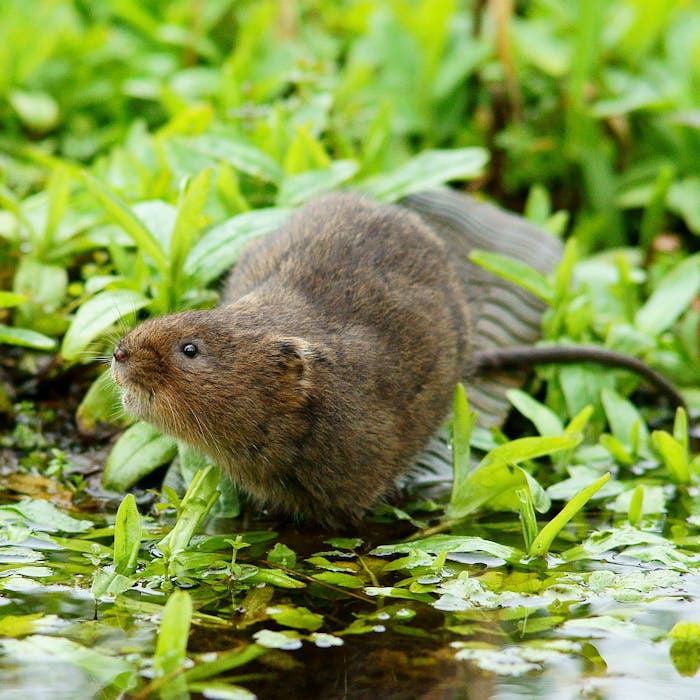
Water vole - more lovable, but much less common, than its cousin the rat
Next time you are enjoying watching the ducks at a local park and then notice what appears to be a rat slipping into the water, you might actually have been lucky enough to see Britain's fastest disappearing mammal - the water vole.
It is easy to mistake the water vole for a rat. The differences to look out for are a more rounded muzzle and smaller lower ears, as well as a coat that is often a warmer and lighter shade of brown, and a tail with fur.
In Britain, water voles live in burrows excavated within the banks of rivers, ditches, ponds, and streams. Burrows are normally located adjacent to slow moving, calm water which the animals seem to prefer. They also live in reed beds where they will weave ball-shaped nests above ground if no suitable banks exist in which to burrow.
Water voles prefer lush vegetation which provides important cover to conceal them when they are above ground adjacent to the body of water.
Water voles mainly eat grass and other vegetation near the water, but will also consume fruits, bulbs, twigs, buds, and roots. They are expert swimmers and divers. Adult water voles each have their own territories, and do not usually live in large groups.
The species has suffered huge declines as a result of habitat loss, pollution of waterways, industrialisation of agriculture, housing development and predation by American mink, which were brought to the UK for fur farming and have escaped. Once a regular sight in ditches, streams and rivers across the UK, water voles are now absent across much of the country, though a number of re-introduction schemes have taken place in recent years to try and keep the vole as part of Britain's wildlife.
The character Ratty, in much-loved children's book The Wind in the Willows, is in fact a water vole.
Further reading
Links to external websites are not maintained by Bite Sized Britain. They are provided to give users access to additional information. Bite Sized Britain is not responsible for the content of these external websites.
